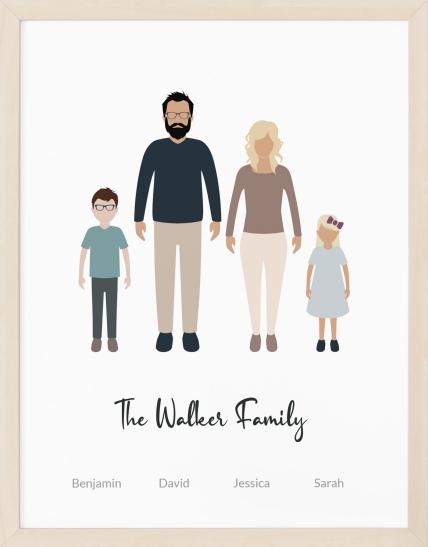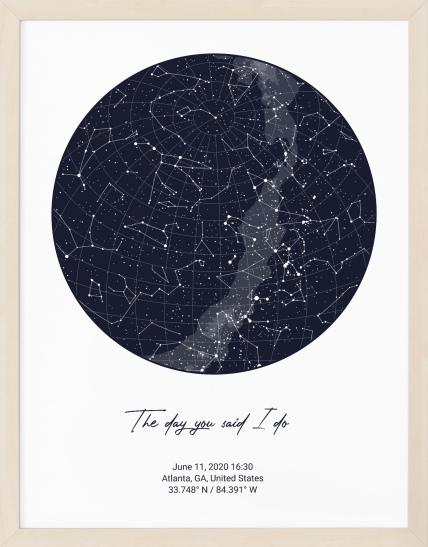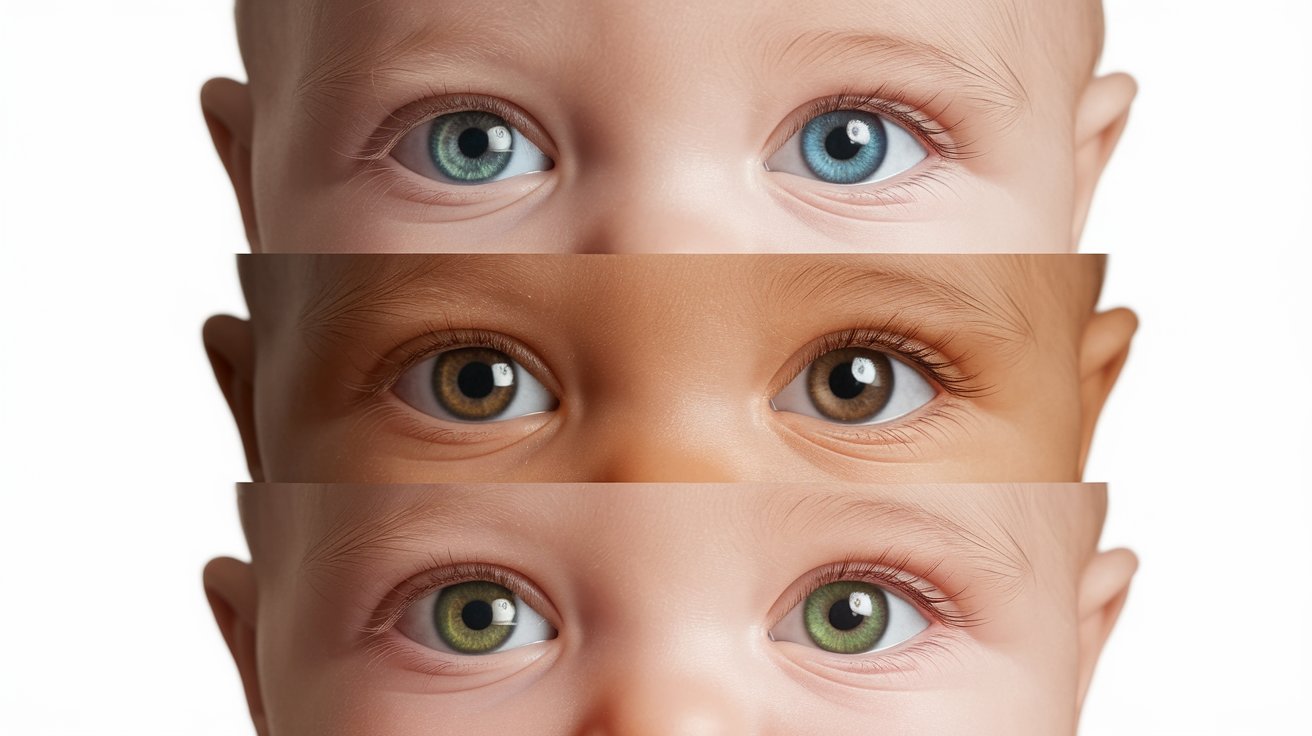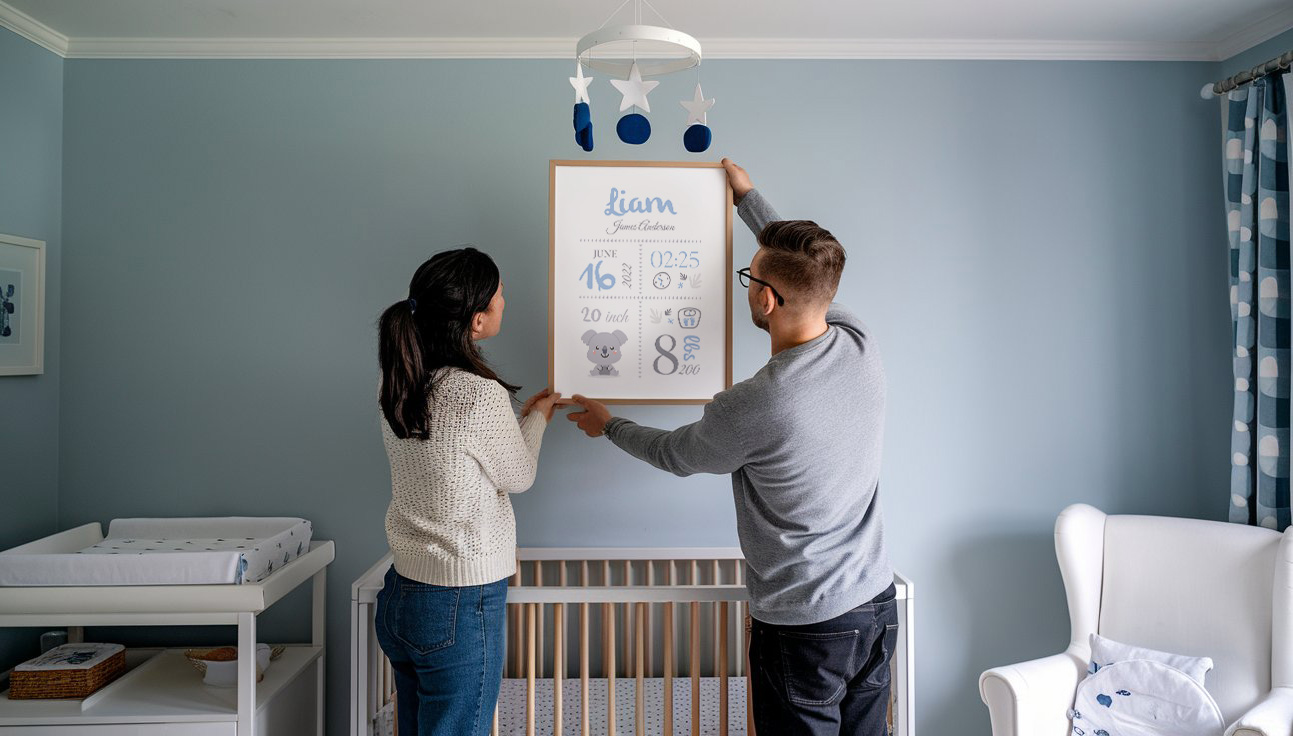Baby Eye Color Calculator
Are you curious about what color eyes your baby might have?
Eye color is a fascinating aspect of genetics, and while we can’t predict it with absolute certainty, we can explore how it works to get a good idea of the possibilities. Let’s dive into an easy-to-understand explanation!
The Role of Melanin in Eye Color 🖌️
The color of our eyes is determined by the amount and distribution of a pigment called melanin in the iris, the colored part of the eye.
- Brown Eyes
High levels of melanin make the iris darker.
- Blue Eyes
Low levels of melanin result in less light absorption, causing the eyes to appear blue due to the scattering of light.
- Green and Hazel Eyes
Moderate melanin levels, combined with the way light scatters in the iris, produce green or hazel eyes.
Think of melanin like paint: the more you add, the darker the color becomes.
Genetics Simplified: How Eye Color is Inherited 🧬
Each parent passes down genes that influence eye color. These genes interact in complex ways, but here’s a simplified version:
- Genes Come in Pairs: We inherit one gene from each parent for every trait.
- Dominant and Recessive Genes:
- Dominant Genes: Traits that are more likely to be expressed (e.g., brown eyes).
- Recessive Genes: Traits that are less likely unless both genes are recessive (e.g., blue eyes).
The Eye Color Hierarchy 📊
Understanding which eye colors are dominant or recessive helps predict possible outcomes:
- Brown
Is dominant over green and blue.
- Green
Is dominant over blue but recessive to brown.
- Blue
Is recessive to both brown and green.
- Hazel Eyes
Are a combination and can vary based on light scattering and melanin.
How Parent Combinations Affect Eye Color 👨👩👧
Let’s look at some examples:
a. Both Parents Have Brown Eyes
| Eye Color of Child | Probability |
|---|---|
| Brown | 75% |
| Green | 18.75% |
| Blue | 6.25% |
b. One Parent Brown, One Parent Blue
| Eye Color of Child | Probability |
|---|---|
| Brown | 50% |
| Blue | 50% |
c. Both Parents Have Blue Eyes
| Eye Color of Child | Probability |
|---|---|
| Blue | 99% |
| Green | 1% |
d. One Parent Green, One Parent Hazel
| Eye Color of Child | Probability |
|---|---|
| Green | 50% |
| Hazel | 37.5% |
| Blue | 12.5% |
Note: These percentages are estimates based on typical genetic patterns.
Why Eye Color Predictions Aren’t Exact 🎲
Eye color inheritance isn’t always straightforward because:
- Multiple Genes Involved: More than one gene affects eye color, leading to a wide range of possibilities.
- Genetic Diversity: Variations and mutations can result in unexpected eye colors.
- Family History: Genes from grandparents or earlier ancestors can influence your baby’s eye color.
For example, two brown-eyed parents might have a blue-eyed child if both carry the recessive blue-eye gene.
When Will Your Baby’s Eye Color Settle? 🕰️
- At Birth: Many babies are born with blue or gray eyes due to minimal melanin.
- First Few Months: Eye color may change as melanin production increases.
- By Age 1: The eye color often settles, but subtle changes can continue until around age 3.
It’s like developing a photo; the true colors come into focus over time.
Using the Baby Eye Color Calculator 🖥️
Our calculator is a fun way to estimate your baby’s potential eye color:
- Select Parent Eye Colors: Choose your and your partner’s eye colors.
- Click Calculate: See the estimated chances for each eye color.
- Explore Possibilities: Understand the likelihood of different eye colors.
Remember, it’s an estimate and not a guarantee!
Embracing Genetic Surprises 🎁
- Every Child is Unique: Genetics can combine in unexpected ways, making each baby one-of-a-kind.
- Beyond Eye Color: Traits like personality, talents, and quirks make your child special.
- Enjoy the Journey: Watching your child grow and change is one of life’s greatest joys.
No matter the eye color, your baby’s eyes will always shine with love and wonder! ✨
Quick Reference Table 📖
| Parent Eye Colors | Most Likely Child Eye Color |
|---|---|
| Both Brown | Brown |
| Brown and Blue | Equal chance of Brown or Blue |
| Both Blue | Blue |
| Green and Hazel | Green or Hazel |
Personalized Birth Poster: The Perfect Baby Gift and Nursery Decor
Celebrate your baby’s arrival with a Personalized Birth Poster—a beautiful keepsake and charming addition to the nursery. Customize it with your baby’s name, birth details, and a choice of soft pastel colors. Add an adorable animal design for extra charm.
This thoughtful gift is ideal for new moms and creates lasting memories while adding a personal touch to your baby’s room.
Create your personalized birth poster!
Final Thoughts
Predicting eye color is a fun way to engage with the wonders of genetics. While science gives us tools to estimate possibilities, the real magic is in the uniqueness of your child. Embrace the surprises and enjoy every moment of this incredible journey!
Happy parenting! 🥰
FAQ
How does melanin affect eye color?
Melanin controls eye color. More melanin gives brown eyes, less melanin results in blue eyes, and moderate melanin leads to green or hazel eyes.
Can two brown-eyed parents have a blue-eyed child?
Yes, if both parents carry the recessive gene for blue eyes, they can have a blue-eyed child.
Is the baby eye color calculator accurate?
It’s an estimate based on genetics, but not 100% accurate due to other genetic factors.
What eye color will my baby have if both parents have blue eyes?
Most likely blue (around 99%), with a small chance of green.
At what age will my baby’s eye color be final?
By age 1, though subtle changes may occur until age 3.
What role do dominant and recessive genes play in determining eye color?
Dominant genes (like brown) are more likely to be expressed, while recessive genes (like blue) appear if inherited from both parents.





